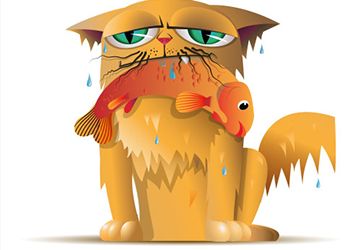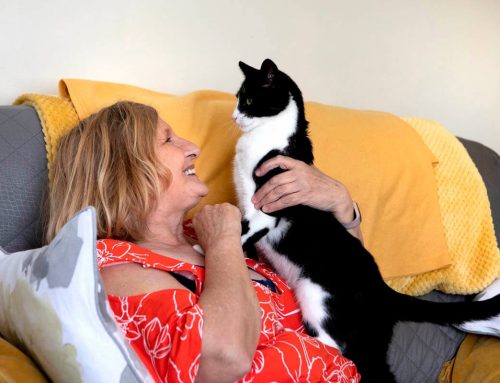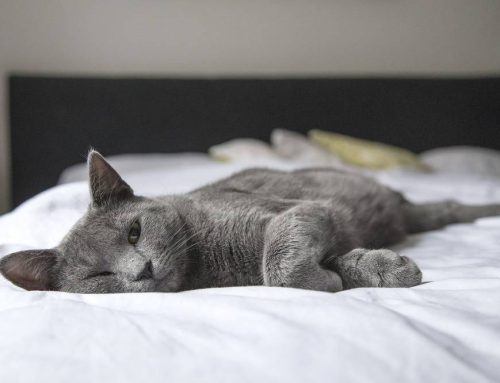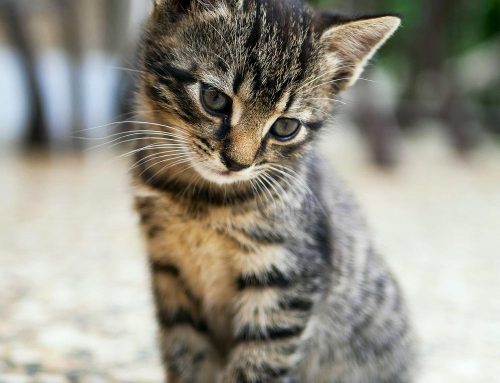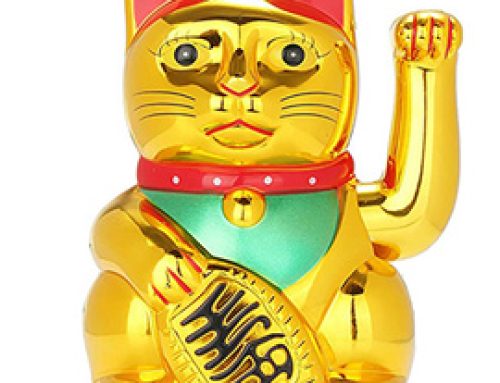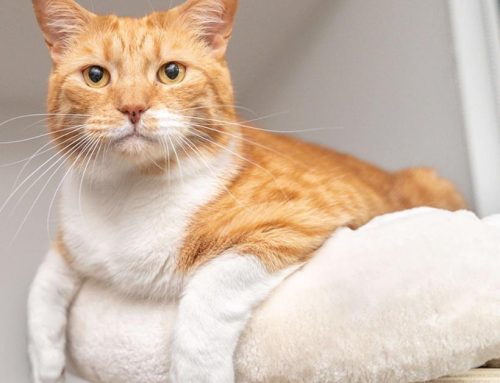How much worse is it for your cat – if you can smell her breath, she can taste it!
Hardly any cats will let their owner brush their teeth, never mind brushing their
teeth themselves!
Cat’s teeth are one of nature’s wonders- they evolved back when dogs and cats split for good in the evolutionary tree. The feline face shape and tooth design and arrangement make the cat family the ultimate hunting machines. The sharp eye teeth (inexplicably called canine teeth!) have a special ‘blood-letting’ groove in them – so they stab quickly and almost painlessly (the pain comes later!). The feline’s jaw muscles are also very powerful, and nerves in the canine tooth allow the cat to apply pressure from 1 psi to 180 psi so a cat knows whether it is biting deeply or just nipping (there is never a mistake on depth of tooth penetration!!). The back teeth (carnassials) are for slicing through skin, muscle and abdominal organs to get mice and other meaty
things into bite-sized pieces which are then swallowed whole. No chewing – as anyone who has ever stepped in cat vomit can attest – the food comes up almost exactly as it was in the bowl or on the way down the throat. Grinding and chewing food is left to the herbivores (cattle, rabbits) and omnivores (humans, pigs, dogs). And giant pandas. The point of the story is that feline teeth are completely different to ours, and so many of the things that have improved human oral health and tooth retention have had no effect on cats. Cat tooth enamel is only 1/3 as thick as ours – so brushing may even be detrimental! Bears and tigers in the zoo get their teeth brushed daily (it is quite a sight) but again, they have denser enamel and bigger teeth, so maybe it helps them. Fluoride does not help with the dental disease that cats get – Feline Odontoclastic Resorbtive Lesions (FORLs). These lesions have been found in mummified Egyptian cats (skeletons found in the Tombs of the Pharaohs), so are part of being a cat for a long time. Even the periodontal disease that 85% of cats eventually get by the age of 3 – 4 years is not responsive to therapy.A landmark study of the feral cats in Kakadu (about as far from humans as you can get) found that they had the same rate of periodontal disease as mummified Egyptian cats. However, these cats rarely live past 5 years old in the wild. Periodontal disease does not stop anyone eating – just think of the guys in the old westerns who turn up clutching their mouths and needing a tooth pulled – none of them ever looked like they’d missed a meal! There is also a juvenile cat gum disease called Lymphocyt-ic-Plasmacytic Gingivitis – which basically means the cats are allergic to their own gums and plaque – and which is extremely difficult to manage medically. The key message in all this is: if your cat’s breath is smelly, or the cat only chews on one side of its mouth, then there is likely occult (hidden) oral pain and it’s best checked out. Very likely your cat is going to lose some teeth, but the
sooner the pain and infection is gone, the better for the cat and the easier it is to save any unaffected teeth. Human periodontists struggle with teeth that are falling out because of bad gums and jawbone disease. Many visits, treatments and medications are required to manage the problem. It is especially bad in those with poor oral hygiene, such as homeless people. However, it turns out that if you take all the teeth out of homeless people, they spend a lot less time in hospital and no more time at the dentists! Finally doctors have noticed that the general health of the human mouth is closely related to people’s general health. If your teeth are horrible – get rid of them. Since a cat’s oral hygiene is about the same as a homeless persons, then we can draw the same conclusion.In the long run, taking teeth out reduces pressure on the kidneys in cats (and the heart in people) because there How much worse is it for your cat – if you can smell her breath, she can taste it! Hardly any cats will let their owner brush their teeth, never mind brushing their teeth themselves! Fish Breath isn’t Normal for a CAT? is less bacteria floating around, and that improves a cat’s general health. SURELY there is something you can do to improve your cat’s teeth? You can’t just give up on them? Well, like so many things, it turns out your cat’s oral health relates back to its mother – how she was fed during pregnancy, and whether she was in a colony with any of the virulent calici-viruses that trigger the juvenile gum disease. If she was badly fed and in a colony whose gums are just melting red lines around their teeth, then nothing we can do will alter the course of the dental disease – the cat will never have good teeth and will be much happier with them out. As long as the long canine teeth can be saved, the cat can still defend itself and kill mice but not peel them – so they will smoosh them up and swallow them whole! (Clever things as always). If your kitten will chew on chicken necks, brisket bones or tear the meat off cutlets, and you let them do it at least twice a week (daily is fine) then your cat will have better teeth than one who won’t.
However, Dr Kim now thinks it is the cats who have good teeth who bother to chew! The rest know they are going to get fed anyway so why waste the effort and maybe endure the pain of chewing on bones? The old chicken and egg story! Which came first, the bad
teeth or the not-chewing? Prophylactic scaling and polishing of cats’ teeth – though a popular veterinary pasttime – has not proven to increase the longevity of either cats or their teeth. Radical removal of all the teeth, if more that 70% are damaged, does increase a cat’s comfort and its life span. The dental food products – especially Prescription t/d’s and Royal Canine Dental diet – do polish your cat’s teeth – there is much less tartar. However, tartar is not the same as disease, and cats will still eat the t/ds even with no teeth! What are we to make of that. A cat’s gotta do what a cat’s gotta maybe! Cats don’t like having their teeth brushed, and Dr Kim has not seen any increased dental health among those who have had them brushed diligently. Some of the mouth rinses are quite useful for reducing bacterial plaque and (probably) bacterial load in the blood stream. However, that treatment is reserved for cats for whom a full anaesthetic and major oral surgery is too risky. This includes cats with bad hearts or kidneys that are too far gone to risk it. When it comes right down to it though, Feline Dentistry is easy – if the tooth or gum looks abnormal, remove the tooth. The new (2011) Feline Dentistry bible makes 3 points: 1) FORLs: if you can see (or feel) enamel damage due to FORLs (which we currently think starts in the dentine ie inside the tooth) then remove the tooth. No ionomers, fillings or curettage will fix it permanently and the pain and tooth destruction carries on. 2) Periodontitis: Once the periodontal ligament (the connective tissue sling that holds the tooth in place and allows it to flex under the pressure of slicing the mouse’s head off) is damaged or becomes brittle with age, the jaw tries to stabilise it by turning it into bone. Nothing reverses the process, so remove the tooth. If it stays there, especially in the upper jaw, infection eventually tracks up the microcracks in the root (remember, it is no longer flexible so it cracks) and forms an abscess in the tooth root. The bone
can become infected (osteomyelitis) and further pain and problems arise. 3) Juvenile gingivitis: if the cat is allergic to its own
plaque, then heroic measures are required (monthly anaesthetics for cleaning and daily gel applications), and this only saves about 50% of the cat’s dentition. The alternative is to take all the teeth out – no teeth = no plaque = no allergy.Sometimes a course of antibiotics, pain relief and Omega-3 oils in high doses can reverse the problem,but basically, lymphocystic- plasmacytic gingivitis is best treated early and by a caudal clearance procedure (remove all the teeth). Feline dentistry still lags a long way behind the complex endeavour of improving and maintaining human oral health. ‘Bad teeth’ however are ‘bad for any species’.
So far, we can only offer the same kind of dentistry to cats that was offered to people in the 1920’s – gas anaesthetics and removal of damaged teeth. Since people born pre- 1920s are now becoming centenarians, it would seem like a good way to approach the problem. At least until cats learn to brush their own teeth with special feline toothpaste!BOOK NOW ON: Phone 0400 756 331
So whether your cat’s breath is fishy and foetid or just for a check up on gorgeous gums, bring them in for a Dental Check – it is free during our Annual Dental Health Week – 22nd – 27th August 2011.


